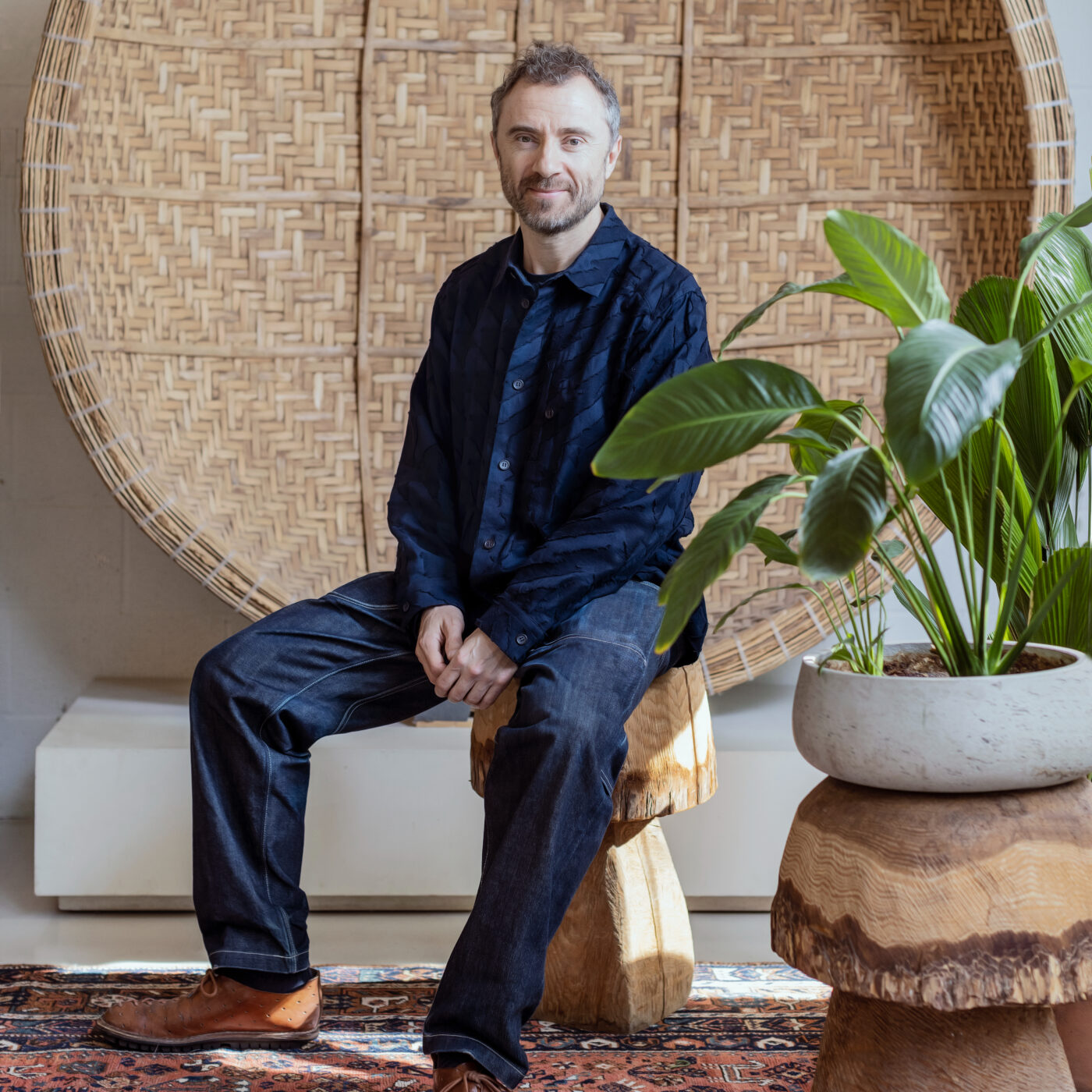Narai chose to collaborate with Heatherwick studio for their ability to create architecture that not only stands out on a skyline, but connects deeply with people. We spoke with Thomas about his philosophy, the importance of emotion in architecture, and why the Hatai development was so special.
What made you want to start Heatherwick studio in the first place?
I started the studio because it seemed as though there was a gap in the world of building our cities.
There was a mindset in the early part of the 20th century that increasingly dehumanised cities.
At the studio, we’re trying to design projects that connect to people’s feelings and emotions, projects that support the mental health of people in cities. And in doing so, making buildings that are ultimately more sustainable. Because if people don’t connect to buildings, they’re more likely to be demolished. This is a huge problem environmentally.
So our duty is to try to make structures that people connect to and love. We’re on a journey to understand what it means for projects to connect with the broadest spectrum of people. And that’s a really interesting and rich area that matters a lot to the humanising of our cities going forward.
What drew you to the Hatai project?
Bangkok is world-famous. And Thailand more broadly is a country with an amazingly rich history. But so many Asian cities, as they develop and their economies grow, are becoming more like everywhere else. The buildings that get built are increasingly characterless, even though they might feel glamorous or of an international style.
But we wanted to do something that connected with a heritage that’s much richer than the anonymous, blank severity of so-called modern buildings.
There’s a richness and intensity about all the things you love in Thai culture — historic architecture, ornaments, shrines — but we had to capture that in a new way. One that had to include towers right at the heart of it!
What was the vision for this development?
Narai Hospitality Group ultimately asked us to create a new district: with hotels, shopping spaces, work spaces, spaces to gather, and also has the echo of the canal that used to run through the site. That meant 7,000 square metres of new public space.
We’re really excited about projects with maximum public exposure, where anyone can walk in. These types of projects can make a city richer and more engaging for everybody — either through new development or renovation — rather than gradually eroding the distinctiveness of cities as they develop.
How do you ensure that large-scale developments such as this still feel human?
Buildings and cities are getting bigger than ever — and I understand why. But humans aren’t. We still crave places that understand and nurture the human scale.
For the last century, cities have been shaped by slogans: “Form follows function.” “Less is more.” “Ornament is crime.” Those ideas might have suited their time, but they’ve been fatal for our cities. Fatal for breathing life into places. They’ve left us with monotony, placelessness and buildings without story.
We used to design buildings that told us who we are. That piqued your curiosity. That had detail. They gave you a micro sense of awe. But over time, we’ve decomplexified the world around us.
With the Narai project, we’ve been excited about building richness back into the city — detail, feeling, story.
We’re really interested in how buildings make people feel. And I know that’s an uncool architectural statement to make! But that’s how we experience them — not as abstract objects, but as emotional spaces.
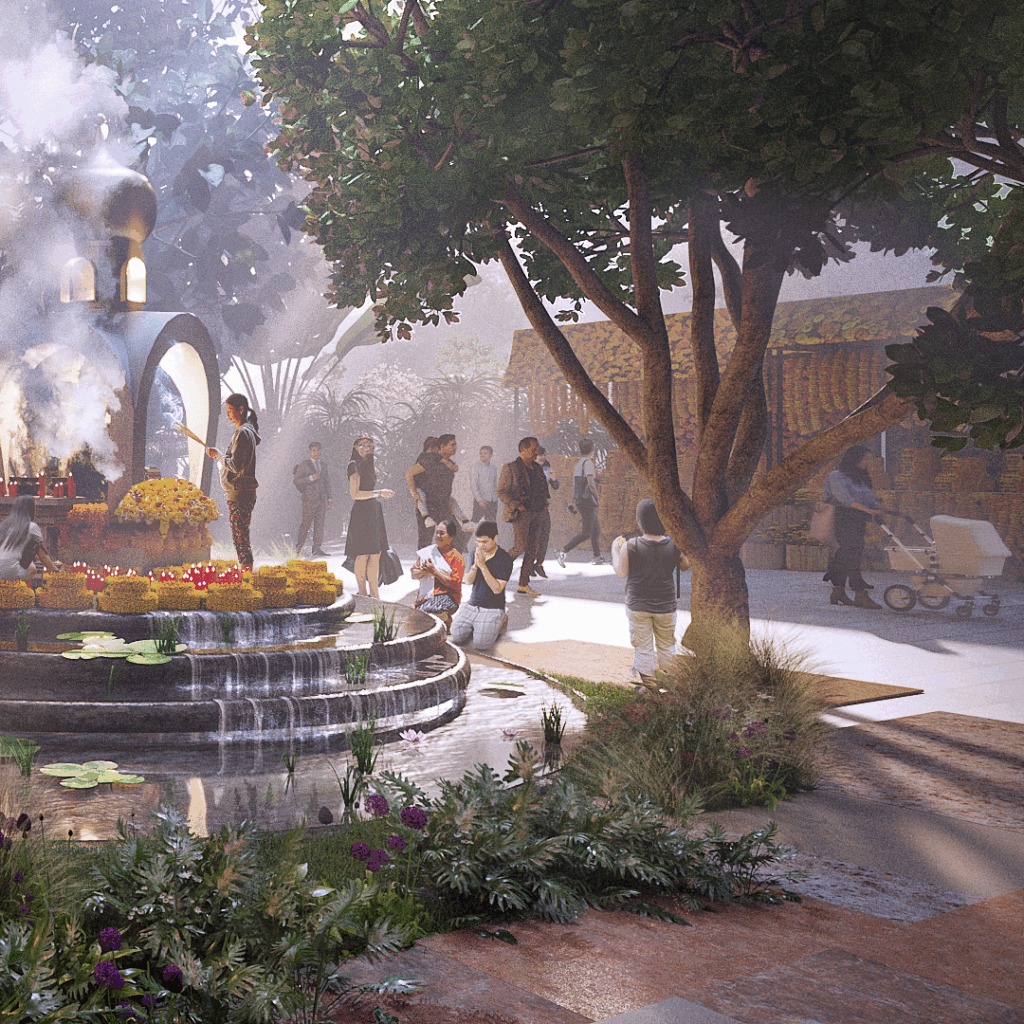
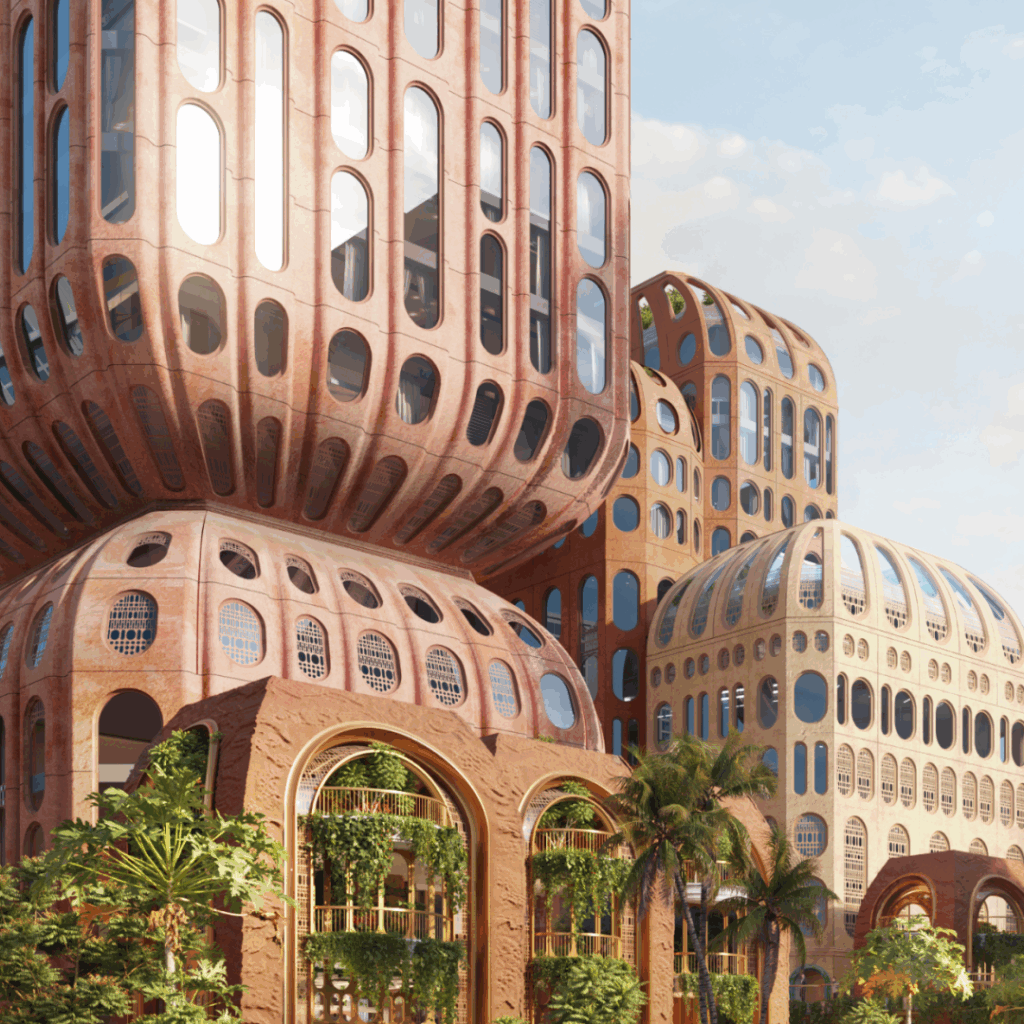
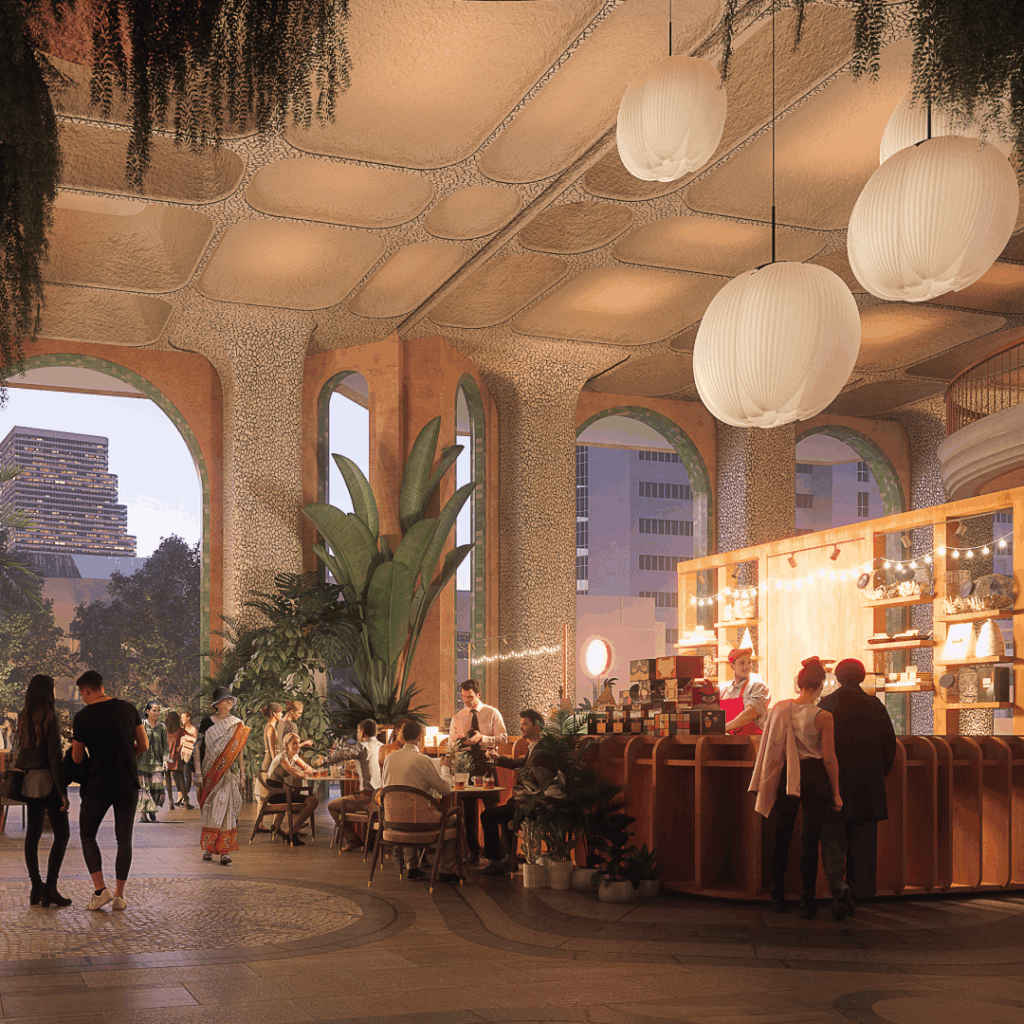
Tell us about the architecture — what makes these towers different?
Instead of being in love with shiny, hard, blocky buildings, we’ve spent a lot of time discussing ‘softness’. But buildings typically aren’t soft, and that made the brief really exciting.
Of course, economically, you have to build two towers. But how can you do that in a way that still feels human in scale?
That led us to ask: ‘Is a tower just one thing or is it actually a series of spaces? Should all the emphasis sit at the top, or could it live further down?’
So rather than seeing the towers as singular, tall mega-objects, we began to imagine them as a collection of things.
A typical tower might well be a hive of activity but it’s all hidden from view. We wanted to call those moments of activity out and let people see and understand them.
So we’ve created a series of lanterns stacked on top of one another, each with its own individual softness and collectively forming a much softer silhouette in the skyline.
How do those lanterns affect the experience at a human scale?
We started thinking about lanterns — how in paper or metal versions, you punch or cut shapes into them to create patterns of light and shadow. That idea inspired us to cut interesting shapes into the towers themselves.
From inside a hotel room, these openings offer something very different from a typical square glass window. They create a sense of softness and texture, and they change how you feel about the view.
At the larger scale, the stacked lanterns break up the monolithic silhouette of a conventional tower. But even at the smallest scale, inside a room or walking past a shopfront, that same softness is present.
The result is a layered effect that runs all the way from the skyline to the street, shaping how people experience the building at every level.
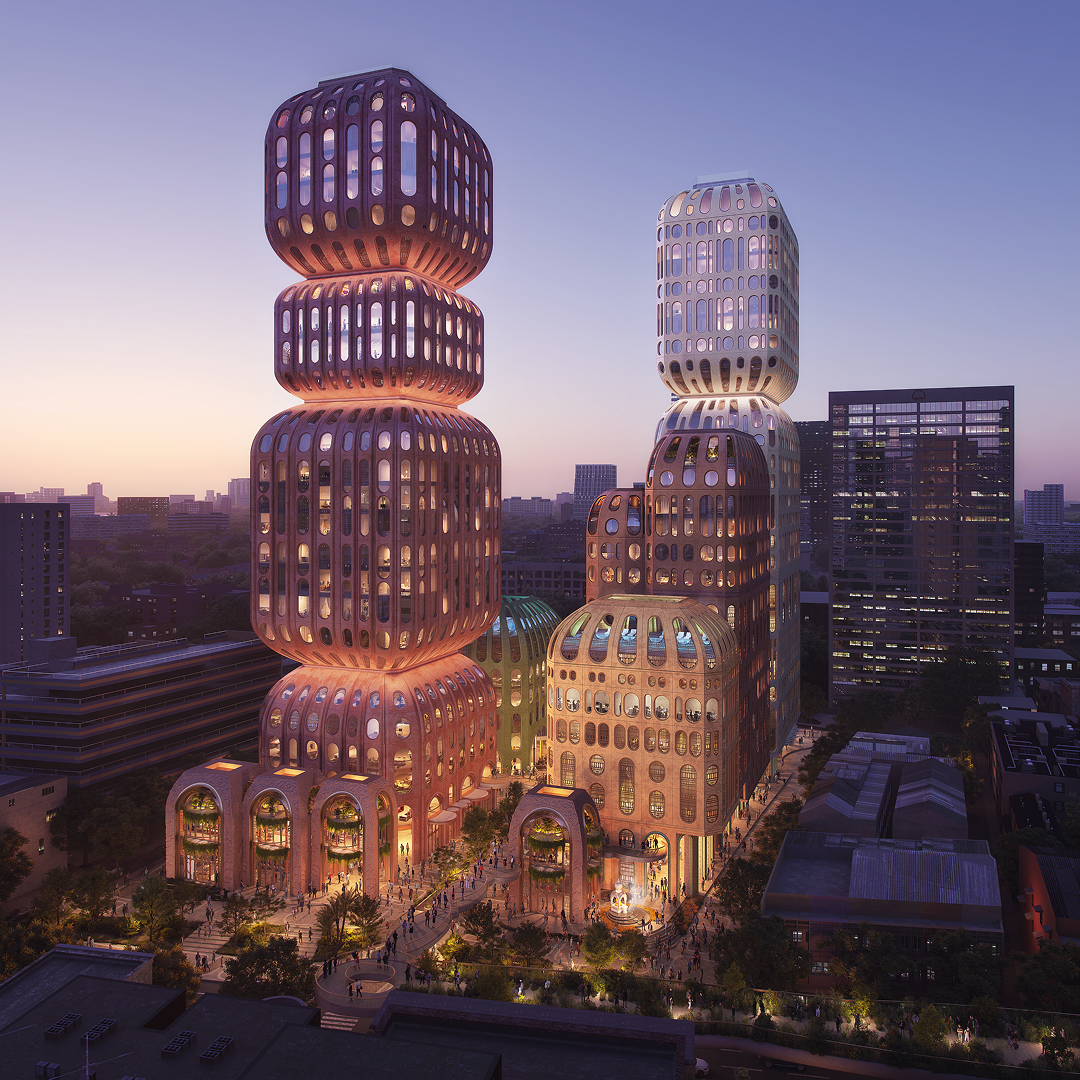
How did the landscape design connect with the architecture?
There was something that struck us about the landscape, the idea that it could echo the shadows cast by a lantern.
When you place a strong light inside a patterned lantern, it throws shapes onto the ground. So we explored what would happen if we took the holes ‘punched out’ of the building and used those same forms across the landscape — for seating, canopies, and other elements.
It created a beautiful synergy between building and landscape. In our experience, a project is at its best when all the details feel part of the same family. When the big story has a natural domino effect into the smallest ones.
How did the history and evolution of Silom Road shape your thinking?
Silom Road used to be water and over time it’s evolved into this big main road. We can’t change what it’s become, but we can respond to what it once was. That gave us the chance to reintroduce elements of water, texture, public space, and rich nature back into the site.
Silom Road is an umbilical link that holds the city together. So doing something meaningful here meant more than just shaping a building. It meant contributing something to the emotional and cultural life of the city.
Our passion is public space, and this project allowed us to explore that on a street that already holds such symbolic weight.
What kind of public space are you hoping this becomes?
Too many developments in Asia, especially in the heat, default to air-conditioned shopping malls. And there’s a hermetically sealed, international blandness that sets in very quickly.
What excites me about being in Bangkok is the street life — the culture, the energy, and the unpredictability of being outdoors. This project gave us the opportunity to create a major piece of public space. It spans 7,000 square metres and includes rain protection, planting, and water, all designed to encourage street-level life filled with curiosity and exploration.
There used to be a canal running through the middle of the site, and the city wanted to bring back a memory of that. It’s these kinds of quirks in a brief that help you make places people really love.
There will be a strong presence of water through the centre, with lots of pathways and cut-throughs. So the heart of the project isn’t actually the towers. It’s more like a water street.
It’s not just a space to pass through, but one to dwell in, to encounter others, and to experience something unique to this part of Bangkok.
What stood out to you about working with the Narai team?
The conversations with the Narai team have been really inspiring. There’s such a deep family connection.
The grandfather built the original Narai Hotel. It was pioneering — one of the first major conference hotels, with a revolving restaurant. It was groundbreaking for its time.
And now they have the courage and leadership to say: it’s time to reinvent.
